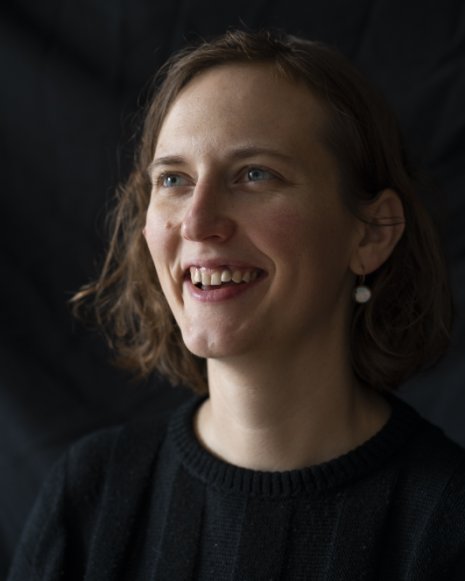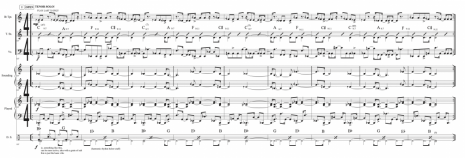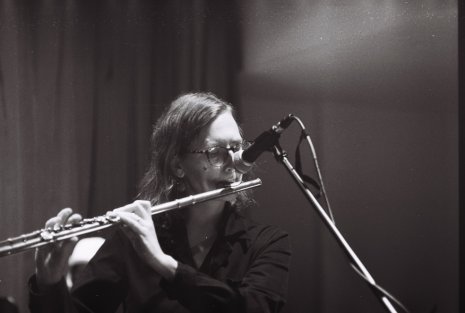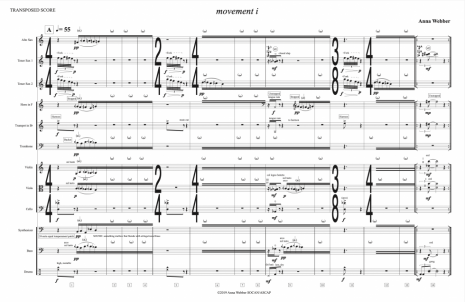In Anna's Words...
I am a composer/performer, situating myself in the jazz world. My career has been primarily band-based, by which I mean that I have cultivated musical relationships with individual performers within the context of a group, and written music for these peoples’ specific instrumental voices and personalities (my own included). I enjoy being hands-on with my work. I don’t feel like a composition is complete until it has gone through the crucible of performance and, more importantly, the ears of the incredible musicians I’m surrounded by.
A few specific musical areas of interest are important to me as a composer. One recent focus has been to translate my improvisational language into a codified, notated language, resulting in using timbre and sound as organizing forces that are as important as harmony. This came from an epiphany I had several years ago: I noticed that there was a rift between the way I played and the way I composed. As an improvisor I was interested in the saxophone as a creator of “sound” and not just “pitch,” but my compositional world was limited to an exploration of the latter. I believe that there should be a continuum between my compositional and improvisational vocabulary, so I set out to bring those languages closer together.
These interests in timbre and sound have led me to do research in the areas of acoustics and psychoacoustics, specifically into the domains where these fields intersect with our human perception of different, non-equal tempered tuning systems.
The relationship between pitch and rhythm has been something I’ve been interested in since the beginning of my compositional journey - how can I make pitches cohere to rhythms, rather than arbitrarily (or even intuitively) connecting the two. I’ve addressed this in various ways in my work, creating little grammars for individual compositions to make every detail make a sort of syntactical sense. The relationship between polyrhythm and JI harmony is much more concrete. Many polyrhythms create rather simple ratios, such as 5:4, 5:6, 7:4, etc. Additionally, polyrhythms, sped up, create certain intervals: just as any regular pulse sped up to the threshold of human hearing (20 pulses per second) will create a pitch, two single pulses sped up will create two pitches, an interval. Those simple ratio intervals exactly correspond to pitches from the overtone series, i.e. Just Intonation! My most recent album, Shimmer Wince, is an exploration of both polyrhythm and tuning from this perspective.
I am rapidly approaching middle-age and am certainly already in my “mid-career”. It feels very new to me to be “older” - I suppose that is something that everyone feels when they reach this place. Over the years, I’ve imagined what I’d like my career to be like at this point. I’ve always wanted to be the sort of artist who stayed in touch with younger musicians, and who kept trying new things. I recognize now that I’m here that the temptation is huge to keep making the same sort of music (with the same sort of people) that earned recognition in the first place - re-creating the thing people liked from the last album is the path of least resistance. Now, obviously there is a real musical benefit to cultivating long-term musical relationships. But I know that moving forward, I also need to be very intentional about forming new relationships and finding new things to explore musically. I’ve also recognized as I’ve gotten older how prevalent the patriarchy inherent in the jazz scene is. Somehow as a younger woman, I accepted the status quo and felt proud to be one of the few women around. I’ve been fighting more in my recent projects to create bands that are more gender-diverse, which goes arm-in-arm with fighting to create bands that are more racially diverse. I am in no way perfect on either of these fronts, but it is absolutely a long- term goal of mine to get better at this.
With all these things in mind, a major short-term goal of mine in the next couple of years is to make a conceptual follow-up to my 2019 septet album Clockwise. That album was very important to me as an artist. It represented a huge step forward for me compositionally, the first project where I felt like I came into my own as a composer. For Clockwise II, I want to challenge myself in the same way that the original Clockwise project challenged me: to move slowly and do something I’ve never done before.





